4N28 Phototransistor Optocoupler IC: Circuit, Datasheet and Pinout
Optocoupler DC-IN 1-CH Transistor With Base DC-OUT 6-Pin PDIP
The 4N28 is an Industry Standard Single Channel Phototransistor Coupler. This article enforces pinout, circuit, datasheet, applications, diagram, and other details about 4N28 Optocoupler. Furthermore, there is a huge range of semiconductors capacitors, resistors, and ICs in stock. Welcome your RFQ!

How an Optocoupler (Optoisolator) Works
What is 4N28 optocoupler?
A 4N28 optocoupler is a single-channel, industry-standard phototransistor coupler. Instead of the 4N28, optocouplers from the 4N25, 26, 27, and other families are available. Electrically isolated Tx and Rx parts, such as GaAs IR LED and a-Si NPN phototransistor, are included in every optocoupler.
4N28 Pinout
The 4N28 is a six-pin integrated circuit that comes in a variety of packaging. In general, we only use four pins in the chip, but we can use up to five. The diode and photo transistor's internal connections are described below.
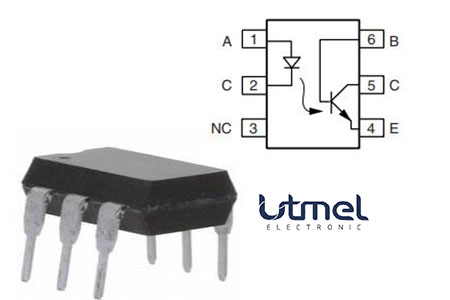
4N28 Pinout
| Pin Number | Pin Name | Description |
| 1 | Anode (A) | The positive terminal of internal IR LED |
| 2 | Cathode (C) | The negative terminal of internal IR LED |
| 3 | NC | No Connection |
| 4 | Emitter (E) | The emitter of internal PHOTOTRANSISTOR |
| 5 | Collector (C) | Collector of internal PHOTOTRANSISTOR |
| 6 | Base (B) | The base of internal PHOTOTRANSISTOR |
4N28 CAD Model
Symbol

4N28 Symbol
Footprint
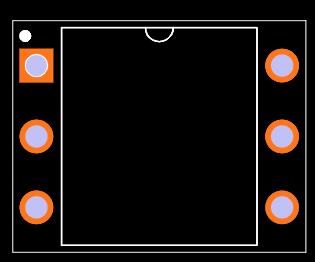
4N28 Footprint
3D Model

4N28 3D Model
Specifications
- TypeParameter
- Factory Lead Time14 Weeks
- Mount
In electronic components, the term "Mount" typically refers to the method or process of physically attaching or fixing a component onto a circuit board or other electronic device. This can involve soldering, adhesive bonding, or other techniques to secure the component in place. The mounting process is crucial for ensuring proper electrical connections and mechanical stability within the electronic system. Different components may have specific mounting requirements based on their size, shape, and function, and manufacturers provide guidelines for proper mounting procedures to ensure optimal performance and reliability of the electronic device.
Through Hole - Mounting Type
The "Mounting Type" in electronic components refers to the method used to attach or connect a component to a circuit board or other substrate, such as through-hole, surface-mount, or panel mount.
Through Hole - Package / Case
refers to the protective housing that encases an electronic component, providing mechanical support, electrical connections, and thermal management.
6-DIP (0.300, 7.62mm) - Number of Pins6
- Supplier Device Package
The parameter "Supplier Device Package" in electronic components refers to the physical packaging or housing of the component as provided by the supplier. It specifies the form factor, dimensions, and layout of the component, which are crucial for compatibility and integration into electronic circuits and systems. The supplier device package information typically includes details such as the package type (e.g., DIP, SOP, QFN), number of pins, pitch, and overall size, allowing engineers and designers to select the appropriate component for their specific application requirements. Understanding the supplier device package is essential for proper component selection, placement, and soldering during the manufacturing process to ensure optimal performance and reliability of the electronic system.
6-DIP - Collector-Emitter Saturation Voltage500mV
- Current Transfer Ratio-Min10% @ 10mA
- Number of Elements1
- Operating Temperature
The operating temperature is the range of ambient temperature within which a power supply, or any other electrical equipment, operate in. This ranges from a minimum operating temperature, to a peak or maximum operating temperature, outside which, the power supply may fail.
-55°C~100°C - Packaging
Semiconductor package is a carrier / shell used to contain and cover one or more semiconductor components or integrated circuits. The material of the shell can be metal, plastic, glass or ceramic.
Tube - Published2010
- Part Status
Parts can have many statuses as they progress through the configuration, analysis, review, and approval stages.
Active - Moisture Sensitivity Level (MSL)
Moisture Sensitivity Level (MSL) is a standardized rating that indicates the susceptibility of electronic components, particularly semiconductors, to moisture-induced damage during storage and the soldering process, defining the allowable exposure time to ambient conditions before they require special handling or baking to prevent failures
1 (Unlimited) - Max Operating Temperature
The Maximum Operating Temperature is the maximum body temperature at which the thermistor is designed to operate for extended periods of time with acceptable stability of its electrical characteristics.
100°C - Min Operating Temperature
The "Min Operating Temperature" parameter in electronic components refers to the lowest temperature at which the component is designed to operate effectively and reliably. This parameter is crucial for ensuring the proper functioning and longevity of the component, as operating below this temperature may lead to performance issues or even damage. Manufacturers specify the minimum operating temperature to provide guidance to users on the environmental conditions in which the component can safely operate. It is important to adhere to this parameter to prevent malfunctions and ensure the overall reliability of the electronic system.
-55°C - Max Power Dissipation
The maximum power that the MOSFET can dissipate continuously under the specified thermal conditions.
150mW - Base Part Number
The "Base Part Number" (BPN) in electronic components serves a similar purpose to the "Base Product Number." It refers to the primary identifier for a component that captures the essential characteristics shared by a group of similar components. The BPN provides a fundamental way to reference a family or series of components without specifying all the variations and specific details.
4N28 - Voltage - Isolation
Voltage - Isolation is a parameter in electronic components that refers to the maximum voltage that can be safely applied between two isolated points without causing electrical breakdown or leakage. It is a crucial specification for components such as transformers, optocouplers, and capacitors that require isolation to prevent electrical interference or safety hazards. The voltage isolation rating ensures that the component can withstand the specified voltage without compromising its performance or safety. It is typically measured in volts and is an important consideration when designing circuits that require isolation between different parts of the system.
5000Vrms - Output Voltage
Output voltage is a crucial parameter in electronic components that refers to the voltage level produced by the component as a result of its operation. It represents the electrical potential difference between the output terminal of the component and a reference point, typically ground. The output voltage is a key factor in determining the performance and functionality of the component, as it dictates the level of voltage that will be delivered to the connected circuit or load. It is often specified in datasheets and technical specifications to ensure compatibility and proper functioning within a given system.
30V - Output Type
The "Output Type" parameter in electronic components refers to the type of signal or data that is produced by the component as an output. This parameter specifies the nature of the output signal, such as analog or digital, and can also include details about the voltage levels, current levels, frequency, and other characteristics of the output signal. Understanding the output type of a component is crucial for ensuring compatibility with other components in a circuit or system, as well as for determining how the output signal can be utilized or processed further. In summary, the output type parameter provides essential information about the nature of the signal that is generated by the electronic component as its output.
Transistor with Base - Number of Channels1
- Power Dissipation
the process by which an electronic or electrical device produces heat (energy loss or waste) as an undesirable derivative of its primary action.
150mW - Voltage - Forward (Vf) (Typ)
The parameter "Voltage - Forward (Vf) (Typ)" in electronic components refers to the typical forward voltage drop across the component when it is conducting current in the forward direction. It is a crucial characteristic of components like diodes and LEDs, indicating the minimum voltage required for the component to start conducting current. The forward voltage drop is typically specified as a typical value because it can vary slightly based on factors such as temperature and manufacturing tolerances. Designers use this parameter to ensure that the component operates within its specified voltage range and to calculate power dissipation in the component.
1.3V - Input Type
Input type in electronic components refers to the classification of the signal or data that a component can accept for processing or conversion. It indicates whether the input is analog, digital, or a specific format such as TTL or CMOS. Understanding input type is crucial for ensuring compatibility between different electronic devices and circuits, as it determines how signals are interpreted and interacted with.
DC - Forward Current
Current which flows upon application of forward voltage.
60mA - Max Output Voltage
The maximum output voltage refers to the dynamic area beyond which the output is saturated in the positive or negative direction, and is limited according to the load resistance value.
70V - Output Current per Channel
Output Current per Channel is a specification commonly found in electronic components such as amplifiers, audio interfaces, and power supplies. It refers to the maximum amount of electrical current that can be delivered by each individual output channel of the component. This parameter is important because it determines the capacity of the component to drive connected devices or loads. A higher output current per channel means the component can deliver more power to connected devices, while a lower output current may limit the performance or functionality of the component in certain applications. It is crucial to consider the output current per channel when selecting electronic components to ensure they can meet the power requirements of the intended system or setup.
50mA - Rise Time
In electronics, when describing a voltage or current step function, rise time is the time taken by a signal to change from a specified low value to a specified high value.
2μs - Forward Voltage
the amount of voltage needed to get current to flow across a diode.
1.5V - Fall Time (Typ)
Fall Time (Typ) is a parameter used to describe the time it takes for a signal to transition from a high level to a low level in an electronic component, such as a transistor or an integrated circuit. It is typically measured in nanoseconds or microseconds and is an important characteristic that affects the performance of the component in digital circuits. A shorter fall time indicates faster switching speeds and can result in improved overall circuit performance, such as reduced power consumption and increased data transmission rates. Designers often consider the fall time specification when selecting components for their circuits to ensure proper functionality and efficiency.
2 μs - Collector Emitter Voltage (VCEO)
Collector-Emitter Voltage (VCEO) is a key parameter in electronic components, particularly in transistors. It refers to the maximum voltage that can be applied between the collector and emitter terminals of a transistor while the base terminal is open or not conducting. Exceeding this voltage limit can lead to breakdown and potential damage to the transistor. VCEO is crucial for ensuring the safe and reliable operation of the transistor within its specified limits. Designers must carefully consider VCEO when selecting transistors for a circuit to prevent overvoltage conditions that could compromise the performance and longevity of the component.
30V - Max Collector Current
Max Collector Current is a parameter used to specify the maximum amount of current that can safely flow through the collector terminal of a transistor or other electronic component without causing damage. It is typically expressed in units of amperes (A) and is an important consideration when designing circuits to ensure that the component operates within its safe operating limits. Exceeding the specified max collector current can lead to overheating, degradation of performance, or even permanent damage to the component. Designers must carefully consider this parameter when selecting components and designing circuits to ensure reliable and safe operation.
100mA - Rise / Fall Time (Typ)
The parameter "Rise / Fall Time (Typ)" in electronic components refers to the time it takes for a signal to transition from a specified low level to a specified high level (rise time) or from a high level to a low level (fall time). It is typically measured in nanoseconds or picoseconds and is an important characteristic in determining the speed and performance of a component, such as a transistor or integrated circuit. A shorter rise/fall time indicates faster signal switching and can impact the overall speed and efficiency of a circuit. Designers often consider this parameter when selecting components for high-speed applications to ensure proper signal integrity and timing.
2μs 2μs - Reverse Breakdown Voltage
Reverse Breakdown Voltage is the maximum reverse voltage a semiconductor device can withstand before it starts to conduct heavily in the reverse direction. It is a critical parameter in diodes and other components, indicating the threshold at which the material's insulating properties fail. Beyond this voltage, the device may enter a breakdown region, leading to potential damage if not properly managed. This parameter is essential for ensuring safe operation and reliability in electronic circuits.
5V - Max Input Current
Max Input Current is a parameter that specifies the maximum amount of electrical current that can safely flow into an electronic component without causing damage. It is an important consideration when designing or using electronic circuits to ensure that the component operates within its specified limits. Exceeding the maximum input current can lead to overheating, component failure, or even pose safety risks. Manufacturers provide this parameter in datasheets to help engineers and users understand the limitations of the component and ensure proper operation within the specified parameters.
60mA - Current - DC Forward (If) (Max)
The parameter "Current - DC Forward (If) (Max)" in electronic components refers to the maximum forward current that can safely pass through the component without causing damage. This parameter is typically specified in datasheets for diodes and LEDs, indicating the maximum current that can flow through the component in the forward direction. Exceeding this maximum current rating can lead to overheating and potentially permanent damage to the component. It is important to ensure that the current flowing through the component does not exceed this specified maximum to maintain proper functionality and reliability.
60mA - Input Current
Input current is a parameter that refers to the amount of electrical current flowing into a specific electronic component or device. It is typically measured in amperes (A) and represents the current required for the component to operate properly. Understanding the input current is important for designing circuits and power supplies, as it helps determine the capacity and compatibility of the components being used. Monitoring the input current also helps ensure that the component is not being overloaded or underpowered, which can affect its performance and longevity.
50mA - Vce Saturation (Max)
Vce Saturation (Max) is a parameter commonly found in datasheets of bipolar junction transistors (BJTs) and refers to the maximum voltage drop across the collector-emitter junction when the transistor is fully saturated. When a BJT is in saturation mode, it is fully turned on and acts like a closed switch, allowing maximum current to flow through it. The Vce Saturation (Max) value indicates the maximum voltage that can be dropped across the collector-emitter junction in this state without affecting the transistor's performance. It is an important parameter to consider when designing circuits to ensure proper operation and efficiency of the transistor.
500mV - Current Transfer Ratio
Current Transfer Ratio (CTR) is the gain of the optocoupler. It is the ratio of the phototransistor collector current to the IRED forward current. CTR = (IC / IF) * 100 It is expressed as a percentage (%).
30 % - REACH SVHC
The parameter "REACH SVHC" in electronic components refers to the compliance with the Registration, Evaluation, Authorization, and Restriction of Chemicals (REACH) regulation regarding Substances of Very High Concern (SVHC). SVHCs are substances that may have serious effects on human health or the environment, and their use is regulated under REACH to ensure their safe handling and minimize their impact.Manufacturers of electronic components need to declare if their products contain any SVHCs above a certain threshold concentration and provide information on the safe use of these substances. This information allows customers to make informed decisions about the potential risks associated with using the components and take appropriate measures to mitigate any hazards.Ensuring compliance with REACH SVHC requirements is essential for electronics manufacturers to meet regulatory standards, protect human health and the environment, and maintain transparency in their supply chain. It also demonstrates a commitment to sustainability and responsible manufacturing practices in the electronics industry.
Unknown - Radiation Hardening
Radiation hardening is the process of making electronic components and circuits resistant to damage or malfunction caused by high levels of ionizing radiation, especially for environments in outer space (especially beyond the low Earth orbit), around nuclear reactors and particle accelerators, or during nuclear accidents or nuclear warfare.
No - RoHS Status
RoHS means “Restriction of Certain Hazardous Substances” in the “Hazardous Substances Directive” in electrical and electronic equipment.
ROHS3 Compliant - Lead Free
Lead Free is a term used to describe electronic components that do not contain lead as part of their composition. Lead is a toxic material that can have harmful effects on human health and the environment, so the electronics industry has been moving towards lead-free components to reduce these risks. Lead-free components are typically made using alternative materials such as silver, copper, and tin. Manufacturers must comply with regulations such as the Restriction of Hazardous Substances (RoHS) directive to ensure that their products are lead-free and environmentally friendly.
Lead Free
4N28 Features
Isolation test voltage 5000 VRMS
Interfaces with common logic families
Input-output coupling capacitance < 0.5 pF
Industry-standard dual-in-line 6 pin package
Compliant to RoHS directive 2002/95/EC and in accordance to WEEE 2002/96/EC
IR LED Forward Current during ON (IF): 10mA - 80mA (Typically 10mA, 80mA being absolute maximum forward current)
IR LED MaximumReverse Voltage: 6V
IR LED Maximum Reverse Current: 10uA
The maximum voltage across COLLECTOR and EMITTER of PHOTOTRANSISTOR: 70V
Maximum current allowed through TRANSISTOR COLLECTOR(IC): 100mA
Current Transfer Ration (CTR): 10%
Typical Rise Time: 3us
Typical Fall Time: 3us
4N28 Equivalents
4N25, 4N26, 4N27, 4N33, and MCT2E are equivalent 4N28 optocoupler ICs. However, electrical factors such as current, frequency, and voltage may differ. So, before replacing these ICs with 4N28ICs, these parameters must be checked, else the ICs may be damaged.
4N28 Applications
Circuit isolation
DC motor speed control
Lighting systems
PWM applications
AC mains detection
Reed relay driving
Switch-mode power supply feedback
Telephone ring detection
Logic ground isolation
Logic coupling with high-frequency noise rejection
4N28 Advantages
Interfacing of an optocoupler is simple by logic circuits.
Small size component
Lightweight
Wideband signal transmission
Because of the unidirectional signal transmission, the noise from output to input doesn’t get integrated
Ensures the control circuits’ protection due to the electrical isolation
Parts with Similar Specs
- ImagePart NumberManufacturerPackage / CaseNumber of PinsNumber of ChannelsVoltage - IsolationCurrent Transfer RatioCurrent Transfer Ratio (Min)Rise TimeMax Output VoltageOutput VoltageForward VoltageView Compare
4N28
6-DIP (0.300, 7.62mm)
6
1
5000Vrms
30 %
10% @ 10mA
2 μs
70 V
30 V
1.5 V
Where to Use 4N28 optocoupler
To establish electrical isolation between two circuits, 4N28 and other equivalent optocouplers such as 4N26, 4N27, and 4N25 can be utilized. In other words, photonics signals such as infrared LEDs and phototransistors are employed to build an electrical connection between two electrical circuits. In short, the 4N28 optocoupler is employed in applications where electrical circuits must be isolated from one another. Check out the samples in the next section for further details.
How to Use 4N28 optocoupler
The Photo Transistor and the IR Diode are the two major components of the 4N28 Optocoupler. This diode can be linked between two terminals (1&2), while the phototransistor is attached between the remaining three terminals (4, 5, and 6). To construct an application circuit, this optocoupler IC is coupled to a few simple components.

4N28 Circuit
In the circuit above, the microcontroller sends trigger pulses to the optocoupler IC, which acts as input signals. The collector terminal is connected to an electric motor, which acts as an output.
The IR diode will be engaged when it receives a +3.3V input signal from the controller.
When it receives electricity, it will generate infrared signals that will trigger the phototransistor. When the transistor is turned on, current flows through the load circuit, and a voltage appears across the electric motor. As a result, once the microcontroller generates HIGH logic toward the IC at the input, this motor will turn.
When the microcontroller's trigger pulses are turned off, the infrared diode's input is turned off. As a result, no power is supplied to the IR DIODE, and it ceases to emit emissions. When no emission is present, the phototransistor is turned off, and the transistor switches from low to high resistance.
The entire voltage supply will come out across the transistor due to excessive resistance, and the current flow within the load circuit will be ZERO. As a result, whenever the microcontroller delivers less logic to the IC at the input, the motor stops rotating.
Both the motor and the transistor act as load circuits in the aforementioned circuit, while the controller and the infrared diode act as trigger circuits. The voltage source employed in the circuit can be used to provide power to the motor.
4N28 Package Dimensions

4N28 Package Dimensions
4N28 Manufacturer
Vishay, an important partner of Digi-Key, serves as a globally recognized manufacturer famous for its discrete semiconductors and passive electronic components. Their discrete semiconductors include diodes, MOSFETs, optoelectronics, etc and their passive components include resistors, inductors, capacitors, etc. These products are widely used for almost all kinds of electronic devices and equipment in the fields of industrial, computing, automotive, telecommunications, military, aerospace, and medical.
Datasheet PDF
- Datasheets :
- RohsStatement :
What is 4N28 used for?
4N28 optocoupler is used for isolating the load circuit & guarding the controller against voltage variations. It isolates the devices with less voltage from circuits with high voltage. How does 4N28 work? 4N28 is a semiconductor device that allows an electrical signal to be transmitted between two isolated circuits. Two parts are used in an optocoupler: an LED that emits infrared light and a photosensitive device that detects light from the LED.
How can optocoupler provide isolation?
An optocoupler achieves this isolation by taking signals that it receives at its input and transferring the signals using light to its output. The optocoupler translates the signal on its input into an infrared light beam using an infrared light-emitting diode (LED).
How does 4N28 work?
4N28 is a semiconductor device that allows an electrical signal to be transmitted between two isolated circuits. Two parts are used in an optocoupler: an LED that emits infrared light and a photosensitive device that detects light from the LED.
 Microchip ATmega64L8AQ Datasheet: Features, Applications, and Reference Designs
Microchip ATmega64L8AQ Datasheet: Features, Applications, and Reference Designs29 February 202485
 RS232 VS DB9: Disadvantages and advantages of RS232 and DB9, Differences between the RS232 and DB9
RS232 VS DB9: Disadvantages and advantages of RS232 and DB9, Differences between the RS232 and DB923 February 202220899
 TPS51219RTER Controller: Datasheet, Price, Application Circuit
TPS51219RTER Controller: Datasheet, Price, Application Circuit23 March 20221044
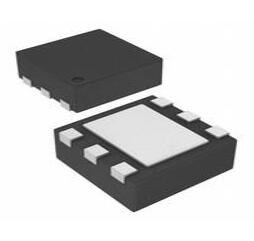 TPS7A11 Voltage Regulator: Pinout, Datasheet, Alternatives
TPS7A11 Voltage Regulator: Pinout, Datasheet, Alternatives06 October 2022910
 2P4M SCR: Datasheet, Pin and Circuit
2P4M SCR: Datasheet, Pin and Circuit09 November 20218441
 Unveiling the SANYO LC87F5R96B 8-Bit Microcontroller: An In-depth Exploration
Unveiling the SANYO LC87F5R96B 8-Bit Microcontroller: An In-depth Exploration29 February 202486
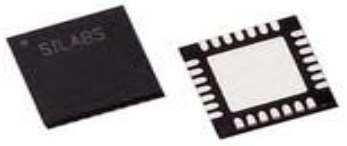 SI4133 Integrated Circuit: Pinout, Features and Datasheet
SI4133 Integrated Circuit: Pinout, Features and Datasheet24 December 2021941
 2SC1815 NPN-Transistor : Pinout, Equivalents and Datasheet
2SC1815 NPN-Transistor : Pinout, Equivalents and Datasheet18 September 202115226
 Robotics and Semiconductor Industries Face Challenges and Opportunities
Robotics and Semiconductor Industries Face Challenges and Opportunities09 September 20232136
 How to Select the Most Accurate Shunt Resistor for Your Circuit
How to Select the Most Accurate Shunt Resistor for Your Circuit06 June 20251304
 A brief Analysis of the 555 Timer Circuit and its Project Applications
A brief Analysis of the 555 Timer Circuit and its Project Applications15 March 20242767
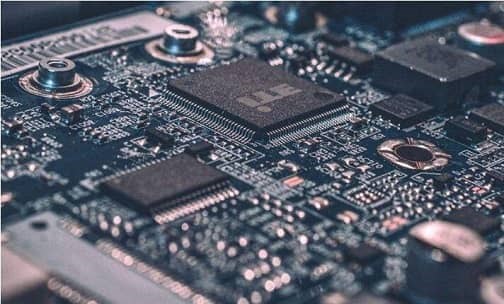 Battery Charger IC Guide
Battery Charger IC Guide16 February 202210290
 What are Weight Sensors?
What are Weight Sensors?31 October 202516346
 What is a Reed Relay?
What is a Reed Relay?16 April 20216844
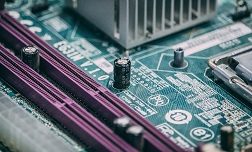 Coping with Radiation-Induced Deterioration in Wide and UltraWide Bandgap Semiconductors
Coping with Radiation-Induced Deterioration in Wide and UltraWide Bandgap Semiconductors01 December 20231924
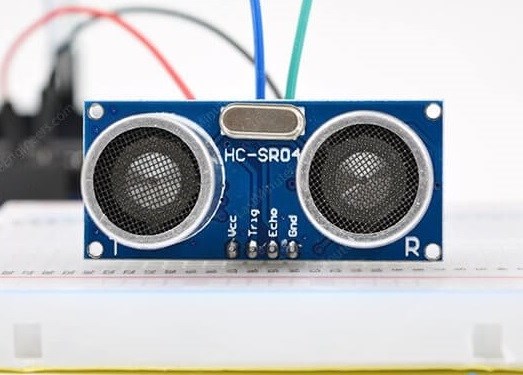 All You Need to Know about Ultrasonic Sensors
All You Need to Know about Ultrasonic Sensors25 October 202510030
Vishay Semiconductor Opto Division
In Stock
United States
China
Canada
Japan
Russia
Germany
United Kingdom
Singapore
Italy
Hong Kong(China)
Taiwan(China)
France
Korea
Mexico
Netherlands
Malaysia
Austria
Spain
Switzerland
Poland
Thailand
Vietnam
India
United Arab Emirates
Afghanistan
Åland Islands
Albania
Algeria
American Samoa
Andorra
Angola
Anguilla
Antigua & Barbuda
Argentina
Armenia
Aruba
Australia
Azerbaijan
Bahamas
Bahrain
Bangladesh
Barbados
Belarus
Belgium
Belize
Benin
Bermuda
Bhutan
Bolivia
Bonaire, Sint Eustatius and Saba
Bosnia & Herzegovina
Botswana
Brazil
British Indian Ocean Territory
British Virgin Islands
Brunei
Bulgaria
Burkina Faso
Burundi
Cabo Verde
Cambodia
Cameroon
Cayman Islands
Central African Republic
Chad
Chile
Christmas Island
Cocos (Keeling) Islands
Colombia
Comoros
Congo
Congo (DRC)
Cook Islands
Costa Rica
Côte d’Ivoire
Croatia
Cuba
Curaçao
Cyprus
Czechia
Denmark
Djibouti
Dominica
Dominican Republic
Ecuador
Egypt
El Salvador
Equatorial Guinea
Eritrea
Estonia
Eswatini
Ethiopia
Falkland Islands
Faroe Islands
Fiji
Finland
French Guiana
French Polynesia
Gabon
Gambia
Georgia
Ghana
Gibraltar
Greece
Greenland
Grenada
Guadeloupe
Guam
Guatemala
Guernsey
Guinea
Guinea-Bissau
Guyana
Haiti
Honduras
Hungary
Iceland
Indonesia
Iran
Iraq
Ireland
Isle of Man
Israel
Jamaica
Jersey
Jordan
Kazakhstan
Kenya
Kiribati
Kosovo
Kuwait
Kyrgyzstan
Laos
Latvia
Lebanon
Lesotho
Liberia
Libya
Liechtenstein
Lithuania
Luxembourg
Macao(China)
Madagascar
Malawi
Maldives
Mali
Malta
Marshall Islands
Martinique
Mauritania
Mauritius
Mayotte
Micronesia
Moldova
Monaco
Mongolia
Montenegro
Montserrat
Morocco
Mozambique
Myanmar
Namibia
Nauru
Nepal
New Caledonia
New Zealand
Nicaragua
Niger
Nigeria
Niue
Norfolk Island
North Korea
North Macedonia
Northern Mariana Islands
Norway
Oman
Pakistan
Palau
Palestinian Authority
Panama
Papua New Guinea
Paraguay
Peru
Philippines
Pitcairn Islands
Portugal
Puerto Rico
Qatar
Réunion
Romania
Rwanda
Samoa
San Marino
São Tomé & Príncipe
Saudi Arabia
Senegal
Serbia
Seychelles
Sierra Leone
Sint Maarten
Slovakia
Slovenia
Solomon Islands
Somalia
South Africa
South Sudan
Sri Lanka
St Helena, Ascension, Tristan da Cunha
St. Barthélemy
St. Kitts & Nevis
St. Lucia
St. Martin
St. Pierre & Miquelon
St. Vincent & Grenadines
Sudan
Suriname
Svalbard & Jan Mayen
Sweden
Syria
Tajikistan
Tanzania
Timor-Leste
Togo
Tokelau
Tonga
Trinidad & Tobago
Tunisia
Turkey
Turkmenistan
Turks & Caicos Islands
Tuvalu
U.S. Outlying Islands
U.S. Virgin Islands
Uganda
Ukraine
Uruguay
Uzbekistan
Vanuatu
Vatican City
Venezuela
Wallis & Futuna
Yemen
Zambia
Zimbabwe












